Rana dalmatina


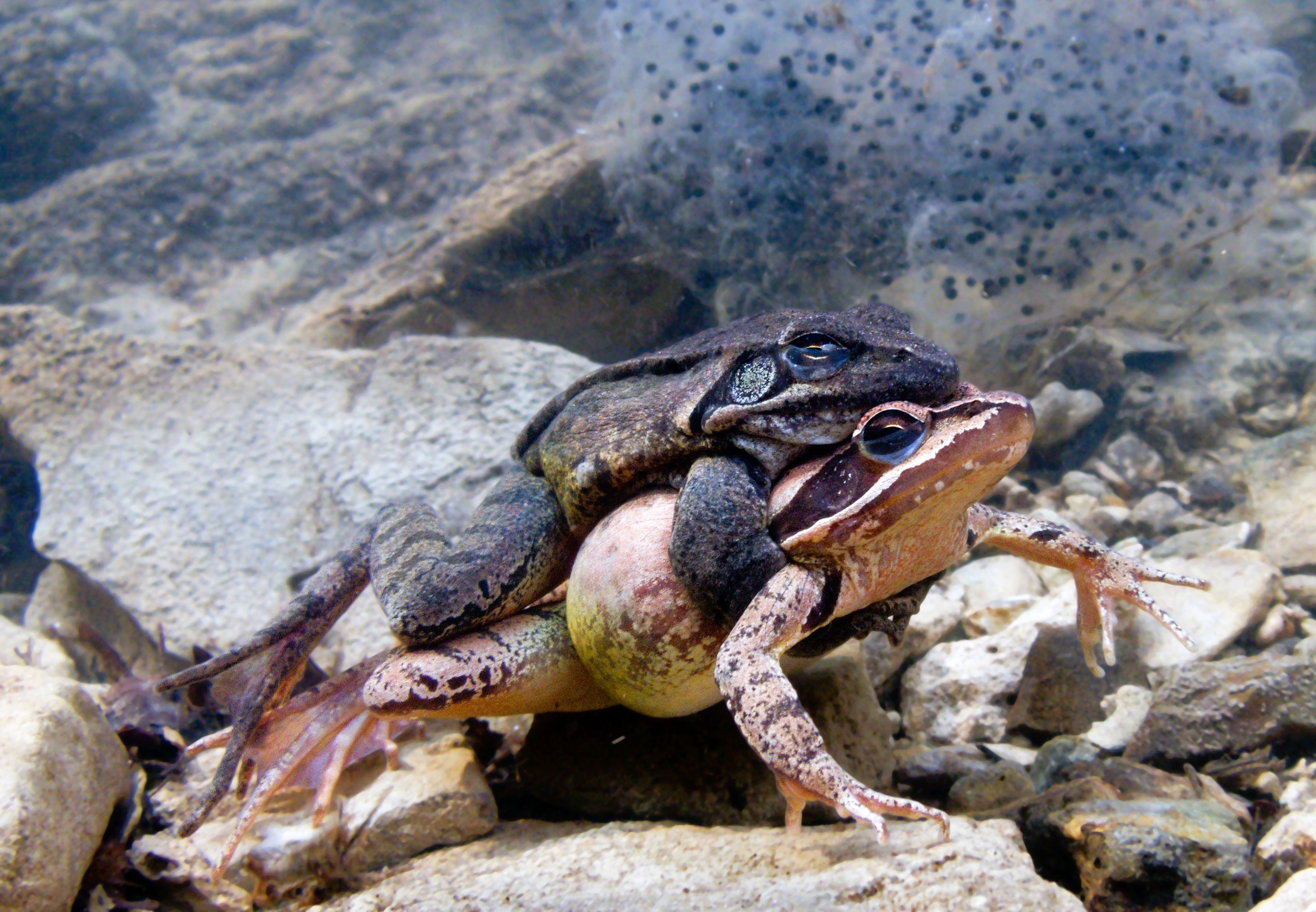
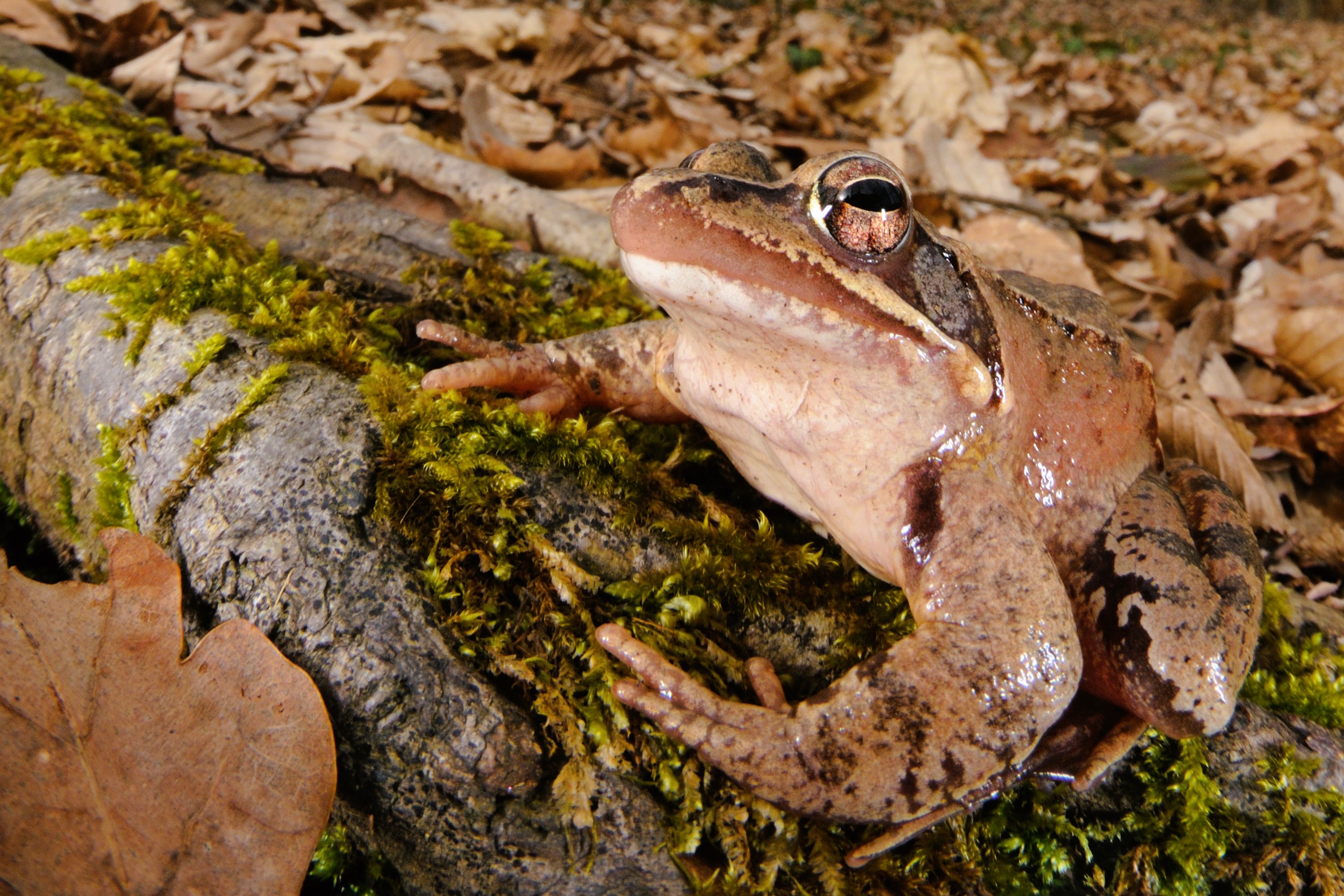
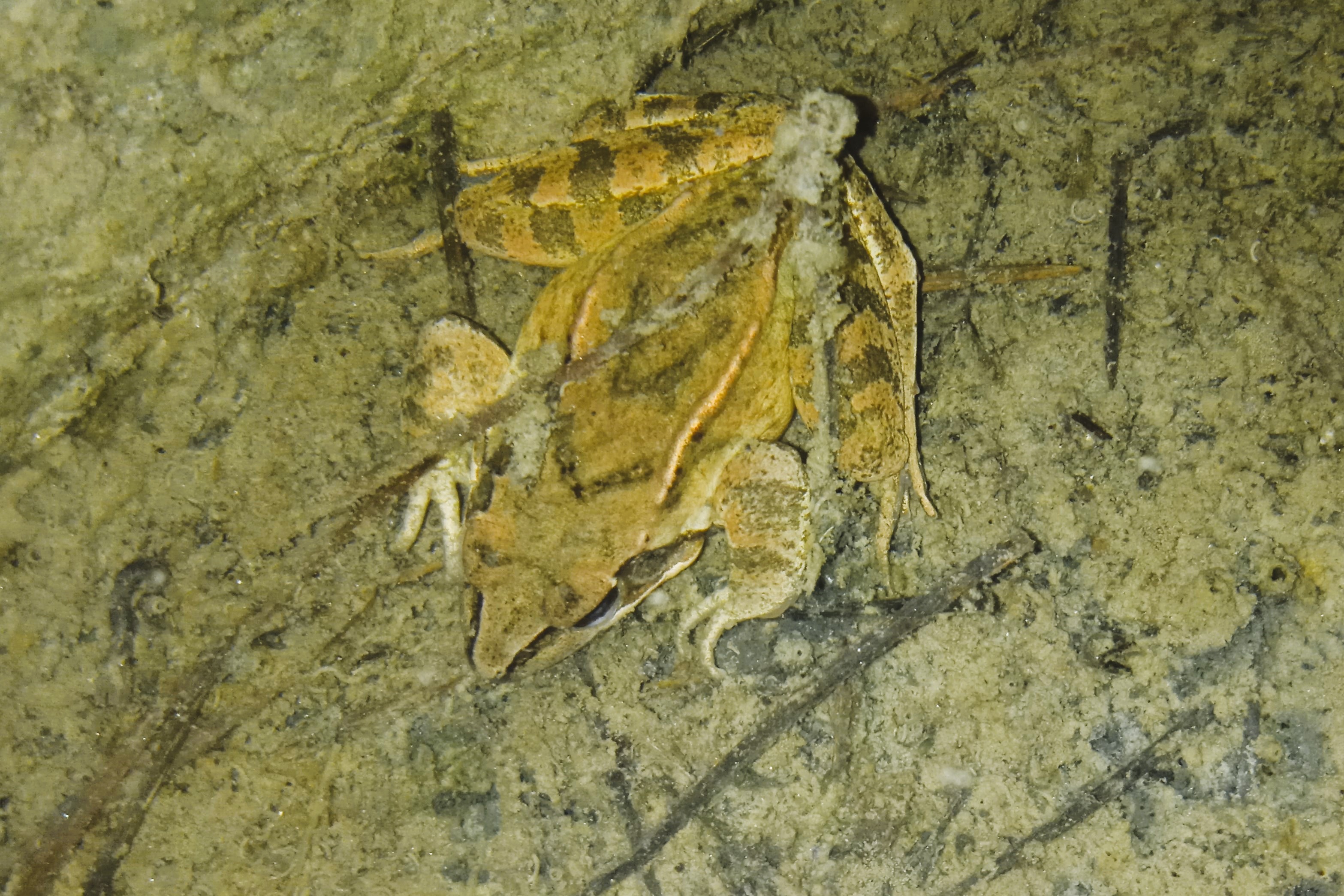
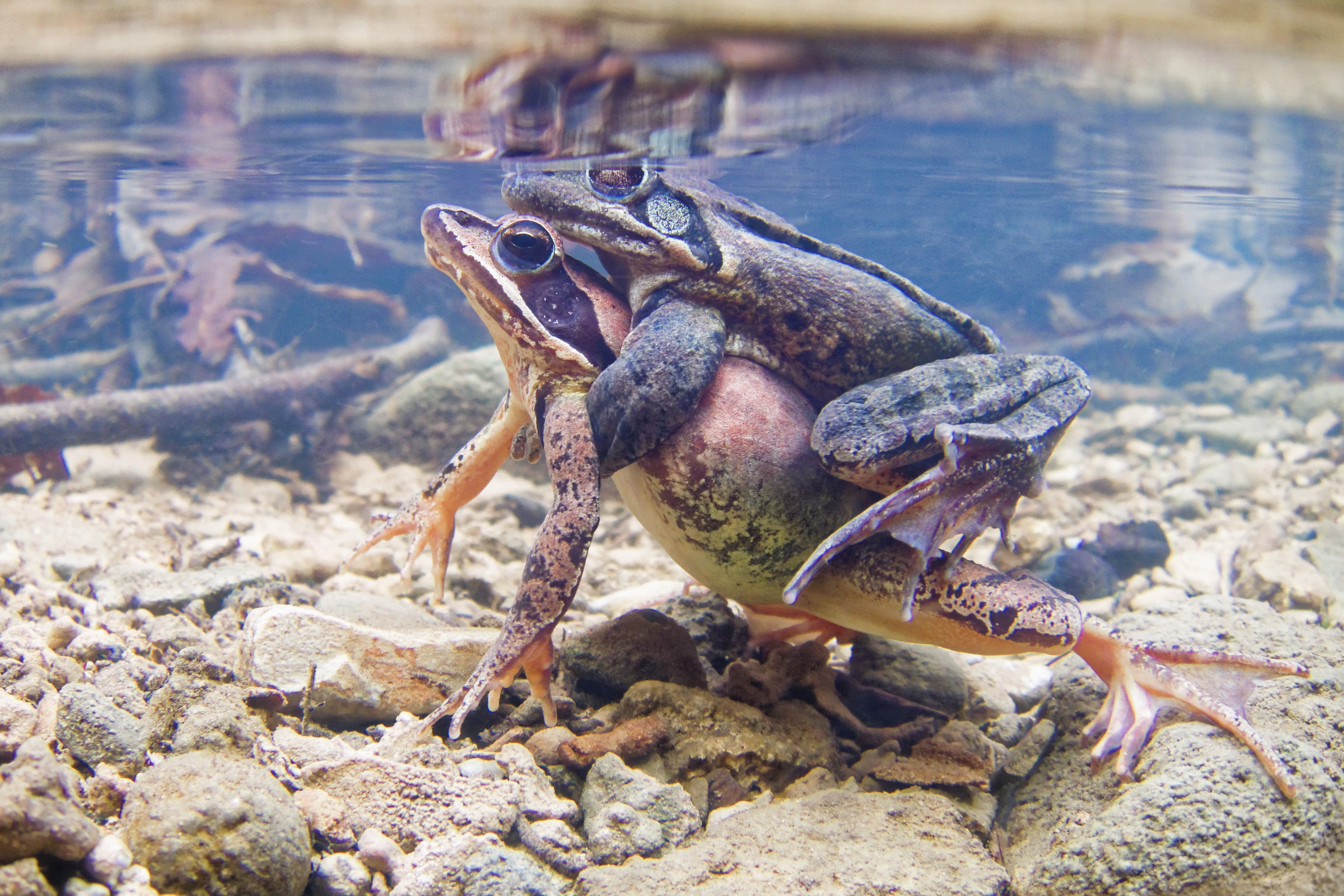
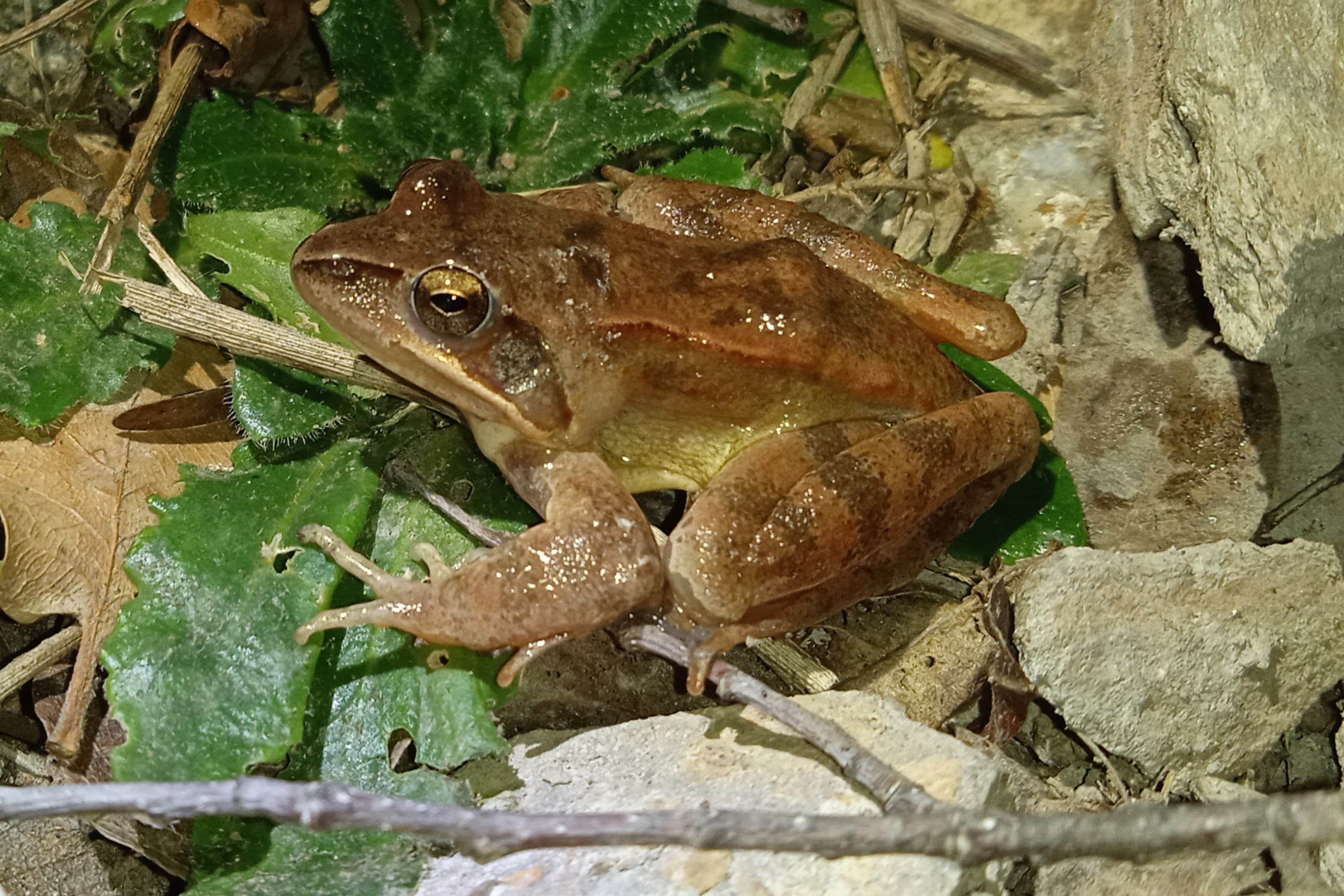
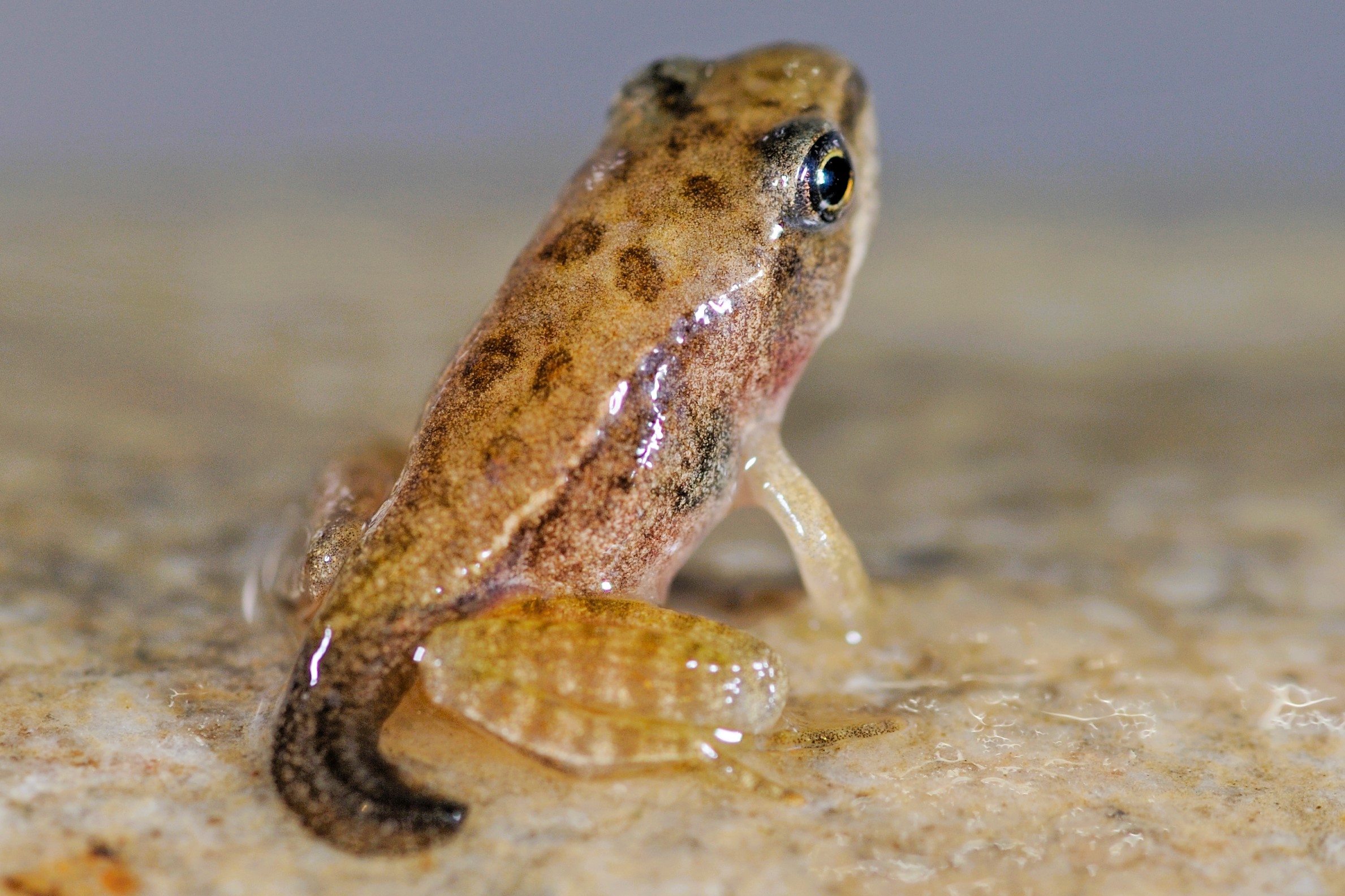

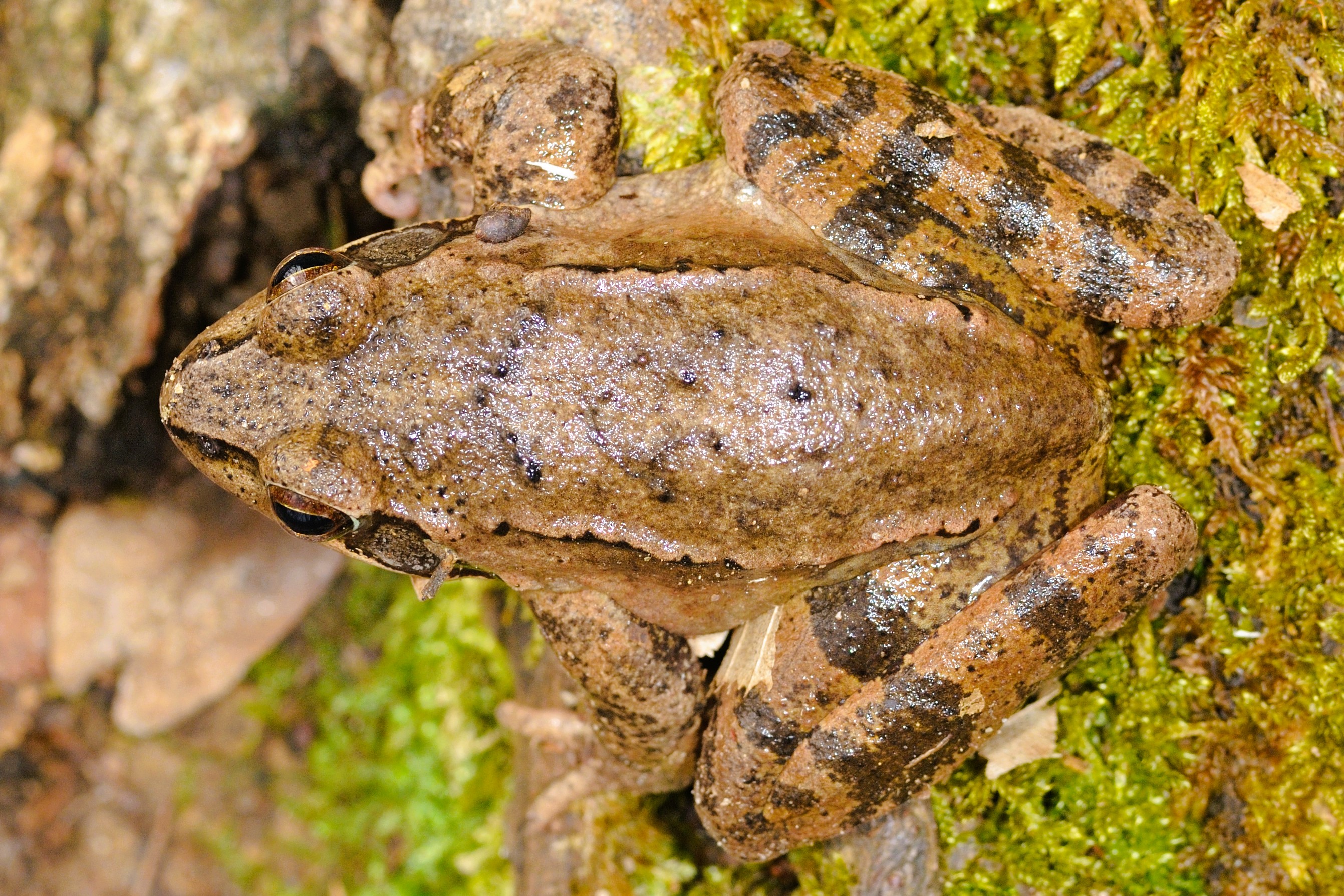
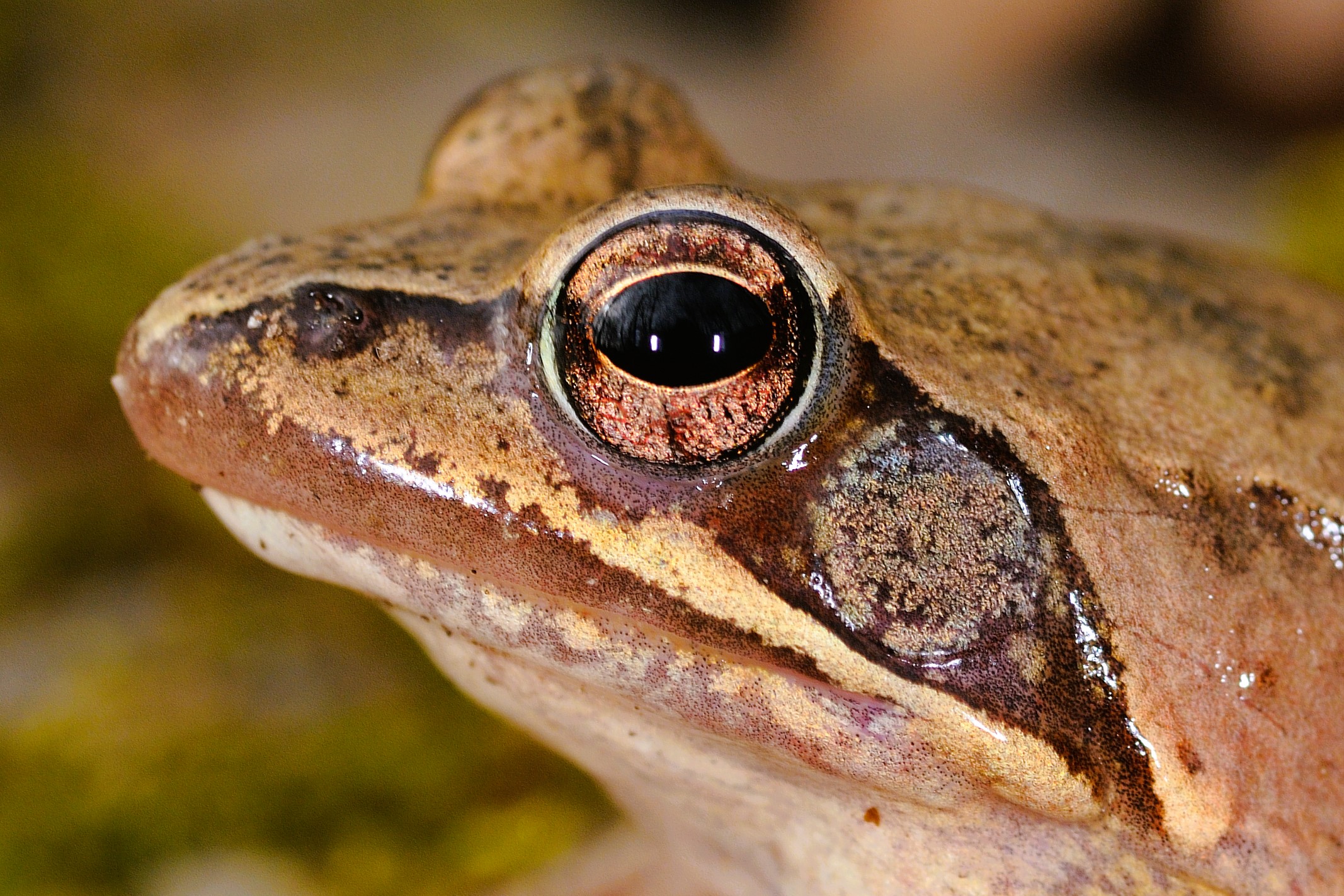
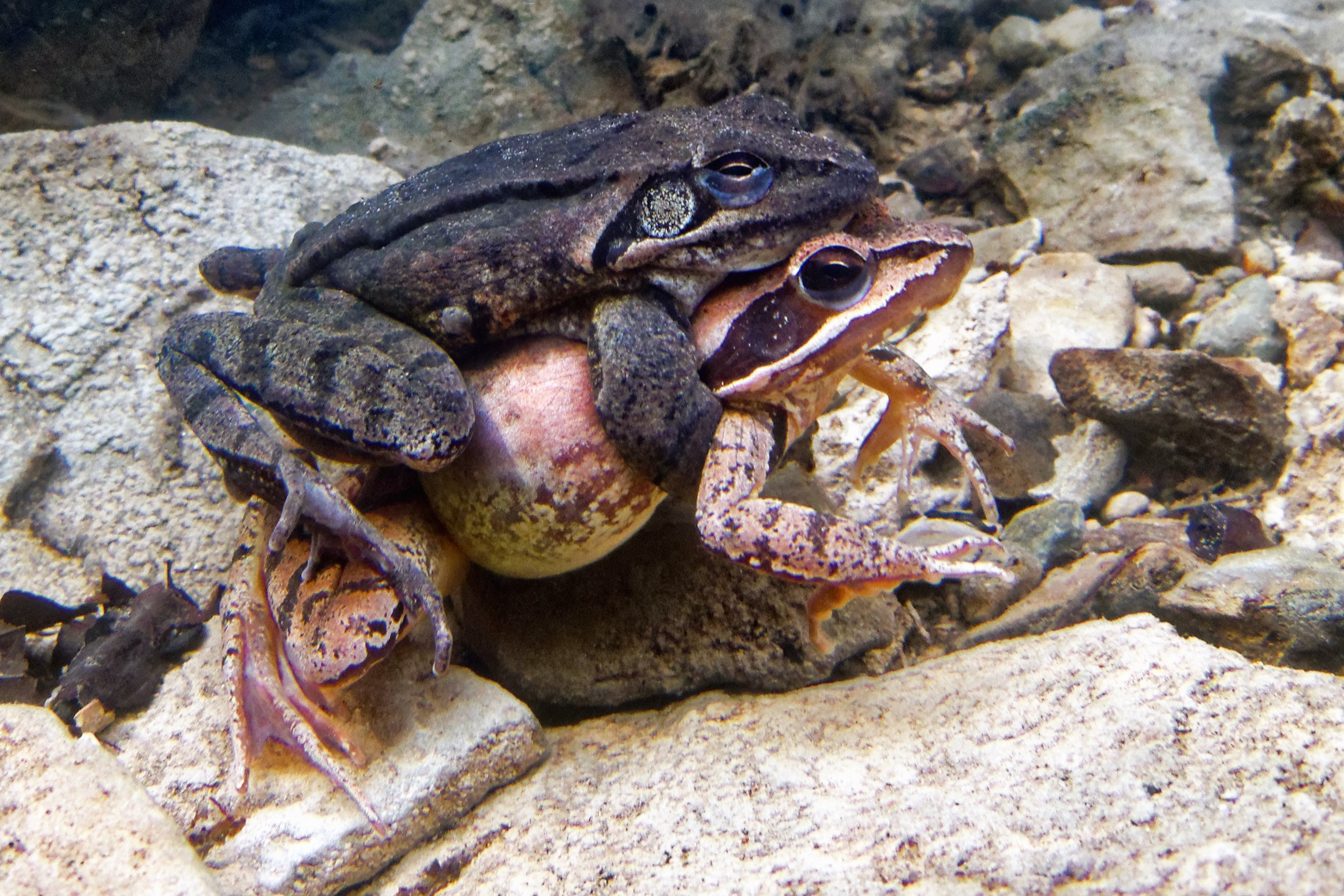
Amphibia → Anura → Ranidae → Rana → Rana dalmatina
Rana sâtaïsa
The Agile Frog ( Rana dalmatina ) is a medium-sized amphibian, characterized by a slender body and notably developed hind legs, which give it a remarkable jumping ability.
Coloration ranges from beige to reddish-brown, often featuring a prominent dark stripe crossing the temporal region and contributing to the species’ elegant and discreet appearance.
Sizes are slightly larger in females, which can reach 3.1 in (8 cm) in length, while males usually range between 2.0 and 2.4 in (5 and 6 cm).
During the breeding season, males develop dark nuptial pads on their thumbs and more robust forelimbs, as well as a rather inconspicuous internal vocal sac.
At birth, tadpoles measure 0.24–0.28 in (6–7 mm) and are recognizable by their dark brown color and delicate golden spots.
The distribution of the Agile Frog in western Liguria is fragmented, mainly concentrated between 660 and 3,280 ft (200 and 1,000 m) in elevation, along cool, humid valleys where mixed forests and permanent streams persist.
Although once more widespread, the species now often occurs in isolated populations located in the less urbanized parts of the Savona hinterland and surrounding areas.
This species prefers humid and cool environments, featuring broadleaved forests, grassy clearings at the edges of the woods, temporary wetlands, and slow-flowing streams bordered by riparian vegetation.
For breeding, the Agile Frog selects pools and small ponds, favoring sites where submerged vegetation offers adequate protection and support for egg masses.
The Agile Frog is active mainly at dusk and during nighttime hours, though during the breeding season it may also be observed by day.
The hibernation period usually extends from November to February and its duration varies according to elevation and local climatic conditions.
Breeding begins early, as early as late February in the milder areas of western Liguria: the female lays 600 to 1,400 eggs in typical spherical clusters anchored to submerged vegetation, while tadpole metamorphosis is completed in about three months.
The adult diet consists mainly of terrestrial insects, spiders, earthworms, and small mollusks, helping control invertebrate populations in the forest ecosystem.
Tadpoles, on the other hand, feed on algae, plant debris, and small aquatic invertebrates, playing an important role in recycling nutrients in freshwater environments.
The main threats to the Agile Frog in the province of Savona and western Liguria are related to the fragmentation and loss of forest habitats, destruction of breeding wetlands, and alteration of watercourses.
Agricultural expansion, pesticide use, introduction of predatory fish into breeding sites, fungal diseases such as chytridiomycosis, and forest fires are additional sources of threat to the species.
In western Liguria it is currently the subject of targeted monitoring to assess population status and the effectiveness of conservation measures, highlighting the importance of its protection for local biodiversity.
The Agile Frog is distinguished for being among the first amphibians to engage in reproduction as soon as winter ends; its eggs, arranged in distinctive spherical clusters floating near the surface, are a sure sign of the species’ presence.
It shows marked fidelity to selected breeding sites and is an excellent ecological indicator of the quality of forest environments.
The Agile Frog is renowned for its jumping ability, which can exceed 6.6 ft (2 m), a trait that inspired its common name.